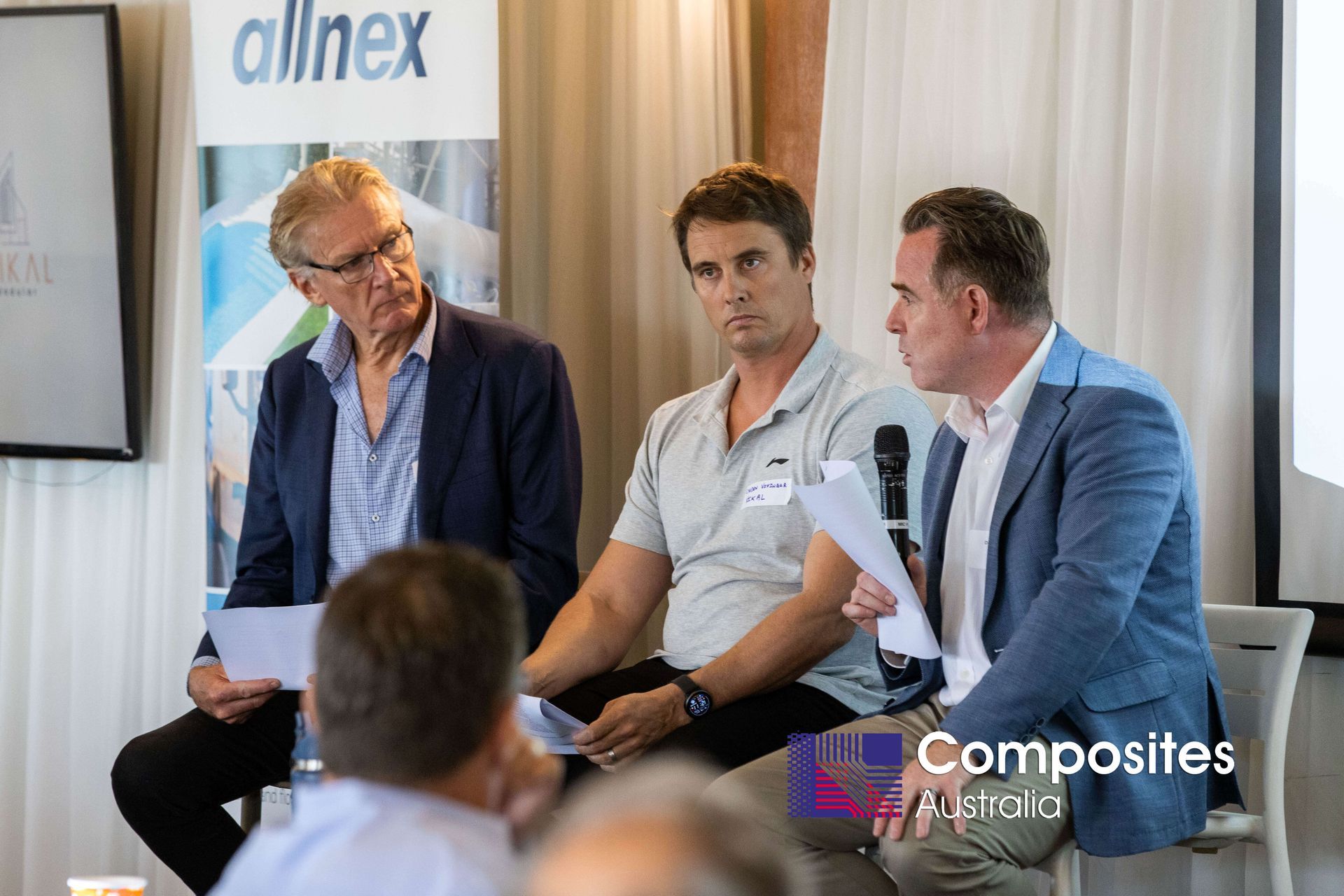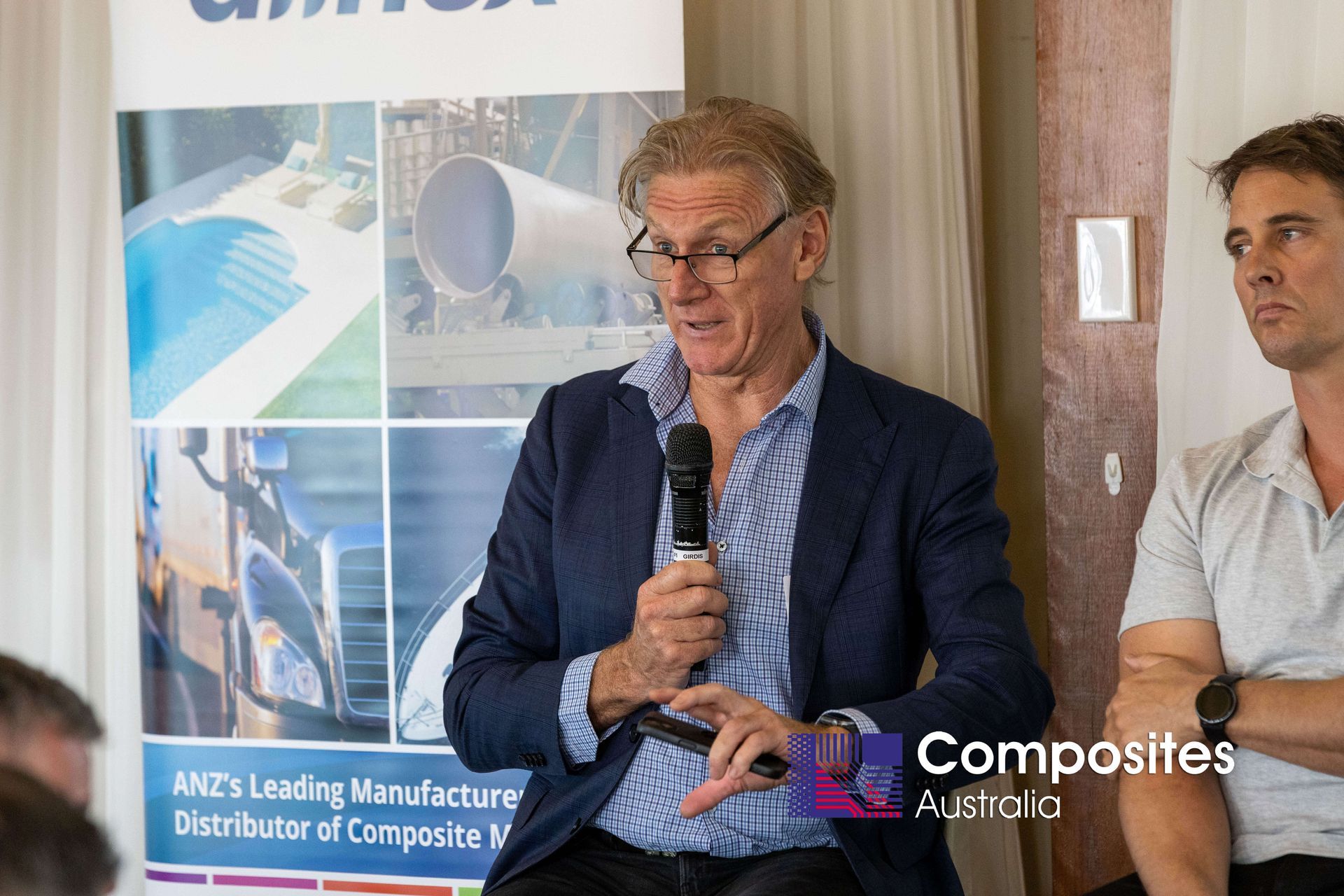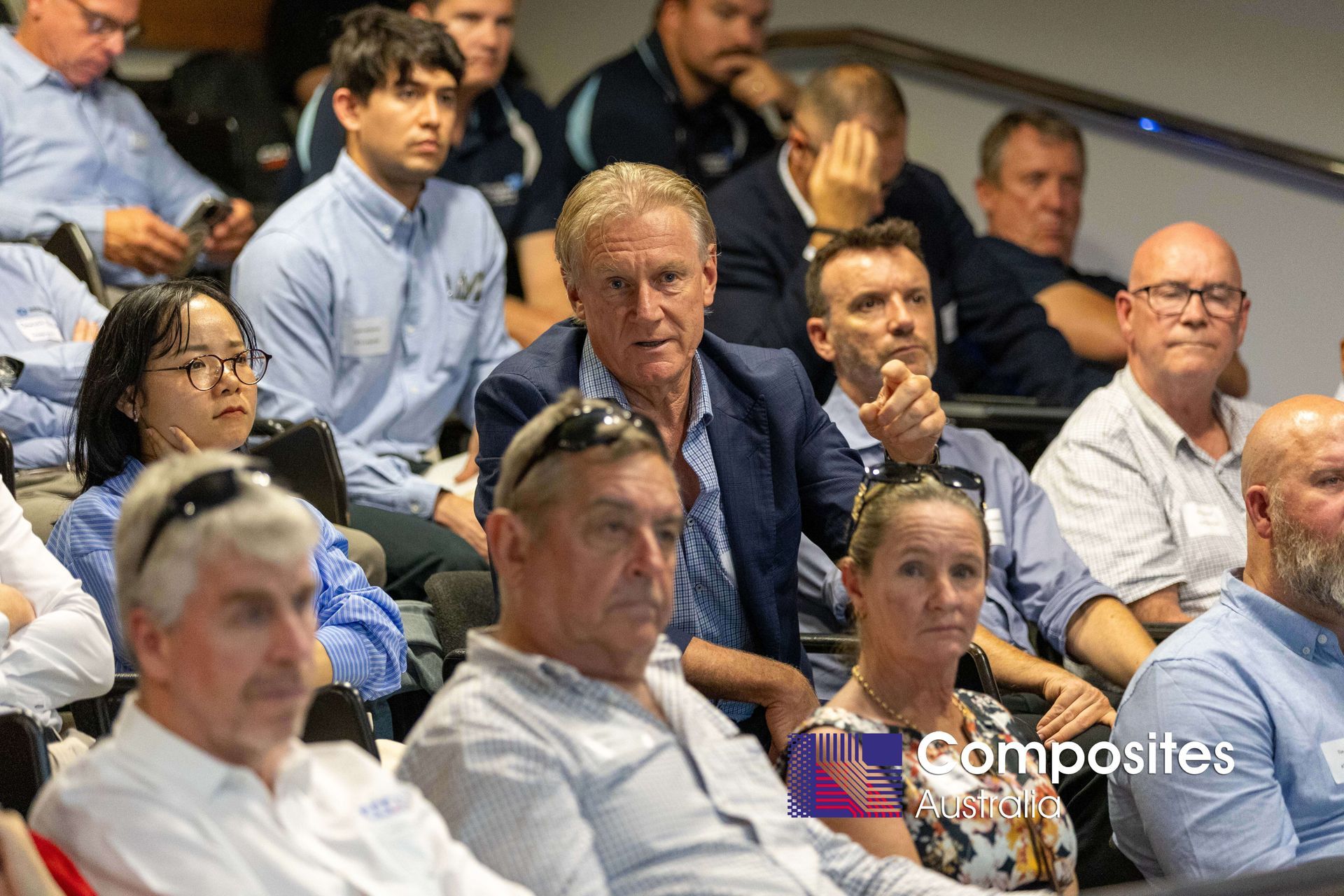Advancing Composite Technologies: Insights from the 22nd Composites Australia Conference
The 22nd Composites Australia Conference, held recently at the Royal Queensland Yacht Squadron Brisbane, brought together leaders from manufacturing, defence, research and infrastructure to explore emerging developments in composite materials and processes.
The event showcased a wide range of timely and transformative topics. Highlights included Simon Karpeles (RPC Technologies Pty Ltd) on GRP cooling water systems for thermal power plants, Eden Murphy (CST Composites) on filament winding innovations and Michael Kemp (Wagners CFT ANZ) on marine infrastructure advancements. Luke Preston (Quickstep) presented on factory simulation in aerospace, Ben Menzies addressed the use of composites in caravanning and David Stevenson (allnex Composites) detailed advances in sustainable resins derived from recycled sources.
Workforce development was another key theme, with Kyle Davison (Riviera Australia) providing insights into structured training in marine manufacturing. In the built environment, Lynden Vikingur (Vikal Modular) and Damien Crough (PrefabAUS) explored the role of composites in prefabricated construction. Defence aviation sustainment was covered in detail by the RAAF’s Defence Aviation Safety Authority (DASA) and Nathan Howell from the
Advanced Manufacturing Readiness Facility (AMRF) delivered a compelling session on de-risking and accelerating manufacturing innovation.
ACM CRC Chief Executive Officer, Dr Steve Gower, chaired the panel discussion, “Advancing Prefabricated Construction with Composite Technologies”, featuring Lynden Vikingur, President of Composites Australia and Damien Crough, President of PrefabAUS. The session examined how traditional composite manufacturing techniques are being adapted to produce cost-effective, weather-resistant housing. By consolidating trades, leveraging in-house moulding and rapid prototyping capabilities and integrating lightweight composite joining systems, panellists demonstrated how this approach achieves faster, more precise and more sustainable outcomes - surpassing conventional on-site construction models.
The conference also drew strong representation from academia, including Deakin University, The University of Southern Queensland and RMIT University, along with insights from organisations such as LeoLabs, Bisley International and INNOVYNC. The breadth of perspectives underscored the sector’s diversity and capacity for innovation.
The event was hosted by Kerryn Caulfield, Executive Director of Composites Australia, who curated the program and led its delivery. Her leadership ensured a seamless and highly relevant conference that reflected the sector’s emerging priorities. Kerryn acknowledged and thanked ACM CRC CEO Dr Steve Gower for his support and contribution to the event’s success, particularly in chairing the session on prefabricated construction.
ACM CRC was proud to support the conference as part of its commitment to strengthening national composites capability through collaboration, research translation and industry engagement. Events such as this play a vital role in connecting stakeholders and accelerating the adoption of advanced composite technologies across priority sectors.







